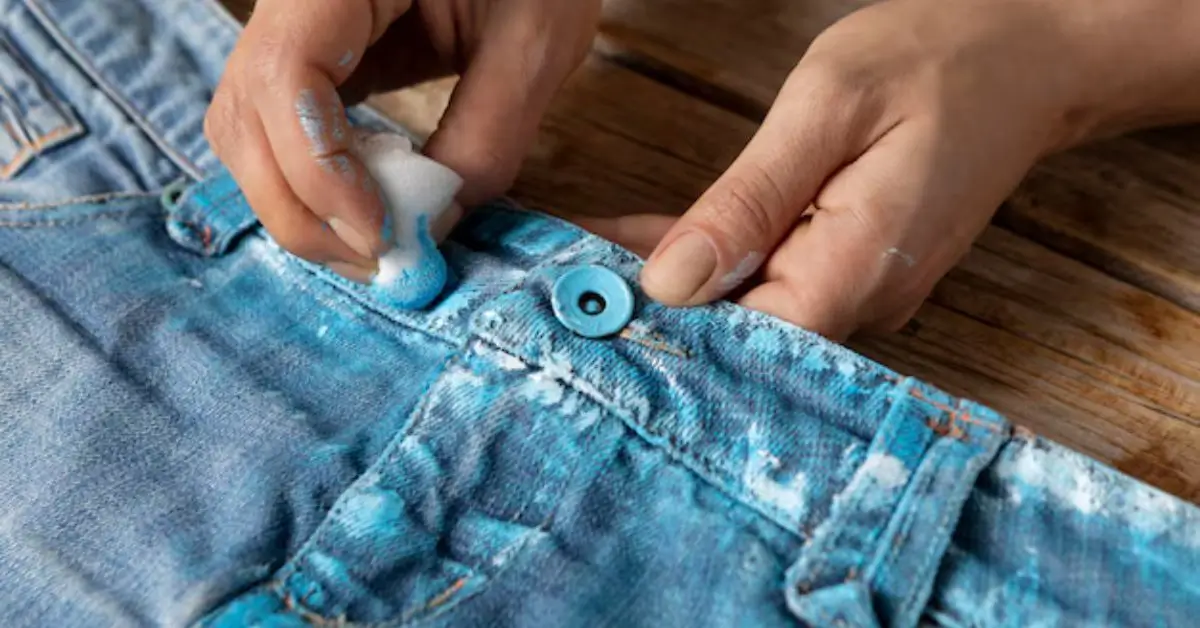How to Measure Inseam, especially when it comes to pants, shorts, and jeans. Whether you’re buying new clothes, tailoring a suit, or engaging in any DIY fashion project, knowing your inseam measurement ensures a perfect fit, making you feel comfortable and confident. In this guide, we will break down everything you need to know about measuring the inseam accurately, why it’s important, the tools needed, and how inseams affect different types of clothing. Additionally, we’ll provide insights on various inseam lengths for different body types, gender-specific guidelines, and how inseam measurements may vary for various styles of pants.
What is an Inseam?
The inseam refers to the length of the seam that runs along the inner side of your leg, from the top of your inner thigh to the bottom of your ankle. This measurement is crucial when determining the length of pants, as it affects how the pants will fit and where they will fall on your leg. For example, a proper inseam ensures your pants aren’t too short, which can lead to an awkward fit, or too long, which can cause bunching around the ankles or require hemming.
For various types of garments, such as jeans, chinos, dress pants, and shorts, inseam measurements are essential to match your body proportions to the clothing for both style and comfort.
Tools Needed to Measure Inseam
Measuring inseam does not require complicated tools or expensive equipment. In fact, you only need the following items:
- Measuring Tape: A soft, flexible tape measure is ideal for accurate measurements. A rigid tape may not give precise results, especially if it doesn’t conform well to the body’s curves.
- Flat Surface: You’ll want to ensure that the pants or legs are straightened out, so a flat surface is helpful for accuracy.
- Pants that Fit Well (Optional): If you already own a pair of pants that fit you perfectly in length, you can use them as a reference point for your inseam measurement.
Step-by-Step Guide to Measuring Inseam
Method 1: Measuring on Your Body
- Stand Straight: Begin by standing up straight with your feet shoulder-width apart. Make sure you’re relaxed and in a natural posture as this will give the most accurate measurement.
- Position the Measuring Tape: Hold the starting point of the measuring tape at the top of your inner thigh (just below the crotch area). This is where the inseam begins.
- Run the Tape to the Ankle: Let the measuring tape drop straight down your inner leg until it reaches the bottom, where you want the pants to end. Typically, this will be just above your ankle bone, but the exact length may vary depending on personal preference and the style of pants you’re measuring for.
- Record the Measurement: Note down the number where the measuring tape reaches the bottom. This is your inseam measurement.
- Consider Shoes: If you are measuring inseam for formal or dress pants, it is a good idea to measure while wearing shoes. This ensures the pants will not be too short or too long when paired with footwear.
Method 2: Measuring Inseam Using Existing Pants
- Lay the Pants Flat: Find a pair of pants that fit you well, especially in terms of leg length. Lay them on a flat surface, such as a bed or table, ensuring they are smooth with no wrinkles or folds in the fabric.
- Measure from the Crotch to the Hem: Place the measuring tape at the crotch seam, which is the intersection where the legs meet. Measure down the inside seam of the leg until you reach the bottom hem of the pants.
- Record the Measurement: Note the number on the tape measure. This number represents your inseam length. You can now use this measurement to find pants that will fit you similarly.
Variations in Inseam Measurement
Inseam measurements can vary depending on several factors such as height, gender, style preferences, and body type. Here’s how inseam measurements may vary across different types of clothing and individuals:
Gender Differences in Inseam Measurements
Men’s Inseam: Typically, men’s pants come in varying inseam lengths such as 28, 30, 32, 34, and 36 inches. Men’s inseams usually correspond to different body heights and leg lengths. For example, a man who is around 5’9″ to 6’0″ may typically wear pants with an inseam of 32 inches, but this can vary depending on leg proportions.
Women’s Inseam: Women’s pants are often available in a broader range of inseam lengths to account for both different heights and styles. For instance, cropped pants may have an inseam as short as 24 inches, while long formal trousers may have inseams of 32 inches or more. Some women may prefer different inseams based on the footwear they plan to wear with their pants.
Inseam for Different Types of Pants
- Jeans: The inseam for jeans can vary depending on the cut of the jeans. Skinny jeans often have a slightly shorter inseam than bootcut or straight-leg jeans to avoid bunching at the ankle. Some brands offer different inseam lengths like short, regular, and long to accommodate different heights.
- Dress Pants: Formal or dress pants usually have longer inseams compared to casual pants, as they are meant to fall just above or at the top of your shoes. Measuring inseam while wearing shoes can help ensure the correct length for formal pants.
- Shorts: For shorts, inseam measurements are much shorter, typically ranging from 4 inches to 11 inches. The length you choose will depend on your personal preference for how much leg you want exposed.
- Chinos and Casual Pants: Chinos, like jeans, offer more flexibility in inseam lengths. They are usually styled for a cleaner, more tailored look, so finding the right inseam length is important to avoid excessive break (folding or bunching at the ankles).
Understanding Break in Pants
The term “break” in pants refers to the way the fabric folds or “breaks” over your shoes at the bottom of the leg. The inseam length affects the break, so it’s important to measure the inseam correctly based on your desired look. Here’s a breakdown of different types of breaks:
- No Break: This means the pants stop just above the shoe without any fabric touching the shoe. It offers a sleek, modern appearance, often seen in tailored suits.
- Slight Break: The pants touch the top of the shoe with a small crease forming. This is a common choice for both casual and formal pants as it provides a balanced, classic look.
- Full Break: The pants have more excess fabric at the bottom, causing a deep fold over the shoes. This is less common in modern styles but is still used for a more traditional, laid-back look.
Inseam and Body Type
Your body type can influence the optimal inseam length for a flattering fit:
- Tall Individuals: If you are tall, finding the right inseam is essential to avoid pants that look too short or cropped. Look for pants with inseam options of 34 or 36 inches to ensure adequate length.
- Short Individuals: Shorter people may need to hem their pants if standard inseam lengths are too long. Inseams of 28-30 inches are often more appropriate.
- Athletic Build: People with an athletic build or muscular legs may prefer a slightly longer inseam to avoid a tight or restrictive fit around the thighs.
Measuring Inseam for Specific Garments
- Athletic Wear: Athletic pants, like joggers or yoga pants, may have different inseam measurements compared to regular pants. When measuring inseam for these, ensure that the pants will allow full range of motion without being too short or too long.
- Overalls or Jumpsuits: Measuring the inseam for overalls or jumpsuits follows the same basic principles. However, the overall fit of these garments may also be influenced by torso length, so it’s important to measure all dimensions carefully.
- Custom-Tailored Pants: For custom-made pants, inseam measurement is just one aspect of the overall sizing process. A professional tailor will often measure your full leg length and other dimensions to ensure a perfect fit from waist to hem.
Tips for Accurate Inseam Measurement
- Measure Twice: It’s always a good idea to take the measurement twice to ensure accuracy.
- Have a Helper: If possible, have someone assist you with the measuring process. They can help ensure the tape measure stays in place and doesn’t shift, leading to a more precise result.
- Wear Minimal Clothing: When measuring your inseam on the body, it’s best to wear thin or tight-fitting clothing so that bulky clothes don’t interfere with the accuracy.
- Choose the Right Style: Consider the style of pants you’re measuring for. Different pants require different inseam lengths, depending on the desired fit.
Conclusion
Knowing how to measure inseam is crucial for ensuring that your pants fit well and suit your body type and style preferences. Whether you’re purchasing new jeans, tailoring dress pants, or creating custom clothing, an accurate inseam measurement is key to looking polished and feeling comfortable. With the right tools, method, and understanding of how inseams affect various types of clothing, you can confidently measure and select the best-fitting pants for any occasion.











